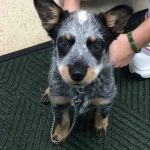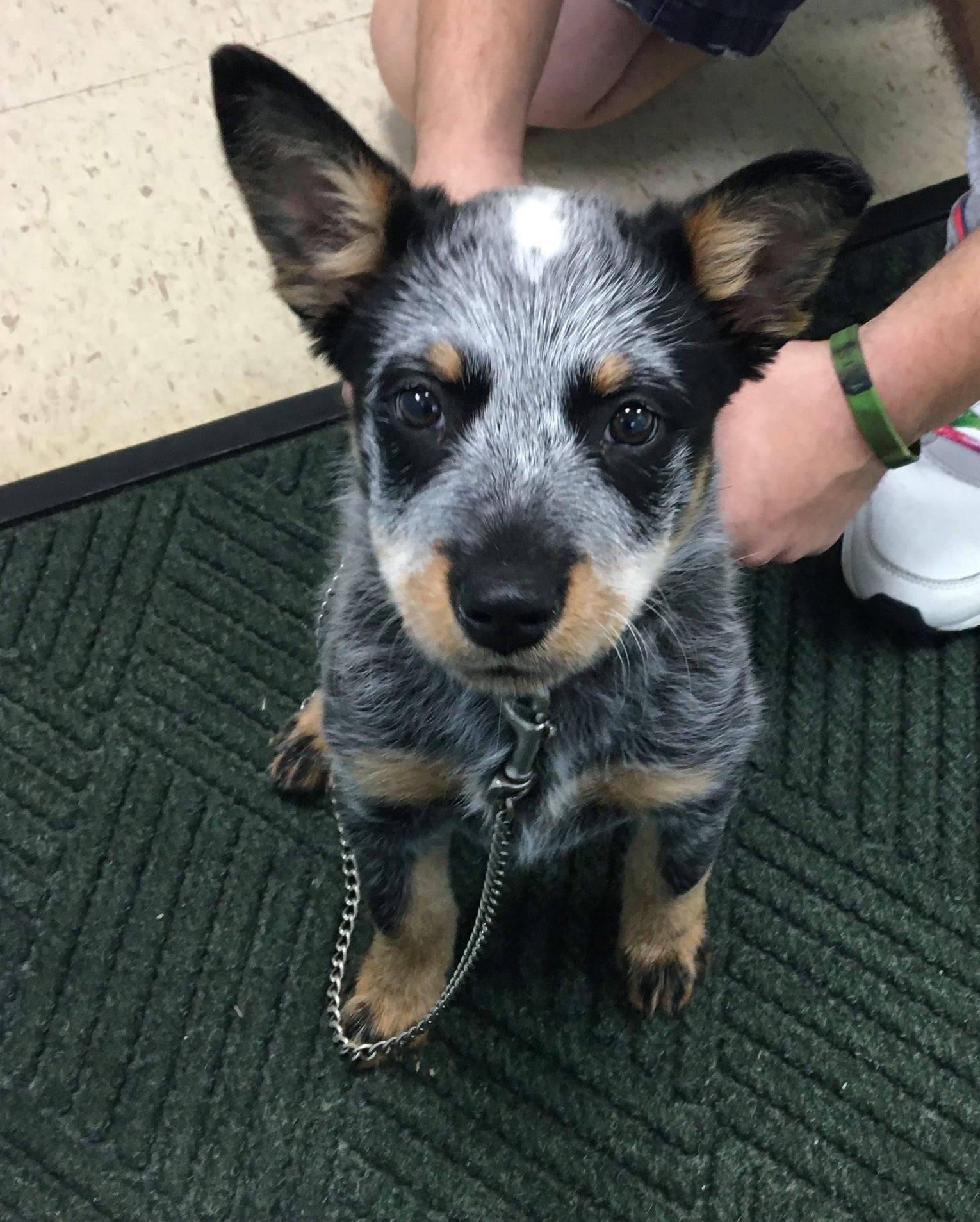It is important to establish a weekly health care routine for your Australian Cattle Dog. Maintaining this schedule will prevent escalation of serious problems that may take expensive veterinary attention.
Eye Care
If the eyes are inflamed or discharging any kind of matter, check for foreign bodies such as soot or weed seeds. Regular flushing of the eye with cotton and cool water will help relieve the eye of debris and pollen.
If your dog’s eyes water continuously, have your veterinarian inspect them for a condition called entropion, in which the eyelid is inverted and the eyelashes cause irritation to the eye. It can be corrected by surgery. Entropion is very rare in Australian Cattle Dogs but has been reported in some instances.
Ear Cleaning
The inside of the ears should always be clean and pink. Nothing other than a cotton Q-tip should ever be inserted into the ear itself and never probe into the inner recess of the ear. Use the Q-tip moistened with olive or almond oil to clean the ear.
If wax has accumulated, dip the Q-tip into rubbing alcohol, squeeze out the excess thoroughly, and clean out the ear. Do not attempt to treat an ear that has an unpleasant odor. Consult your veterinarian immediately. The odor may indicate the presence of parasites in the ear, or worse, there may be an ear infection.
Anal Sacs
 The anal sacs (also referred to as the anal glands by many breeders) are located on each side of the anus and should be regularly looked after. They can become blocked, causing extreme irritation and abscesses in advanced cases.
The anal sacs (also referred to as the anal glands by many breeders) are located on each side of the anus and should be regularly looked after. They can become blocked, causing extreme irritation and abscesses in advanced cases.
If you notice your Australian Cattle Dog pulling itself along the ground when it is sitting down, you should check the anal glands. While not a particularly pleasant part of keeping your dog healthy, if regularly attended to, keeping the anal glands clear is relatively easy.
The best time to attend to this job is when you are giving your dog its bath. With the dog in the tub, place the thumb and forefinger of one hand on either side of the anal passage and exert pressure. The glands will empty quickly. Wear rubber gloves when performing this function and it is best to cover the anus itself with a cotton swab or tissue.
Should you be unsure of how to perform this procedure, your veterinarian or the breeder from whom you purchased your Australian Cattle Dog will instruct you.
Dental Care
Care should always be given to the state of your dog’s teeth. If your dog has been accustomed to chewing hard dog biscuits or gnawing on large rawhide bones since puppy-hood, it is unlikely that you will have any problems as this chewing activity assists greatly in removing dental plaque, which is the major cause of tooth decay.
Any sign of redness of the gums or tooth decay merits expert attention.
Retention of baby teeth can cause long-term problems with the permanent teeth. Generally, by the time the permanent teeth have come through at about five months of age, the baby teeth have all fallen out.
If there are any baby teeth remaining at this stage, seek your veterinarian’s advice on their removal. Retaining baby teeth can interfere with the proper placement of your Australian Cattle Dog’s permanent teeth.

